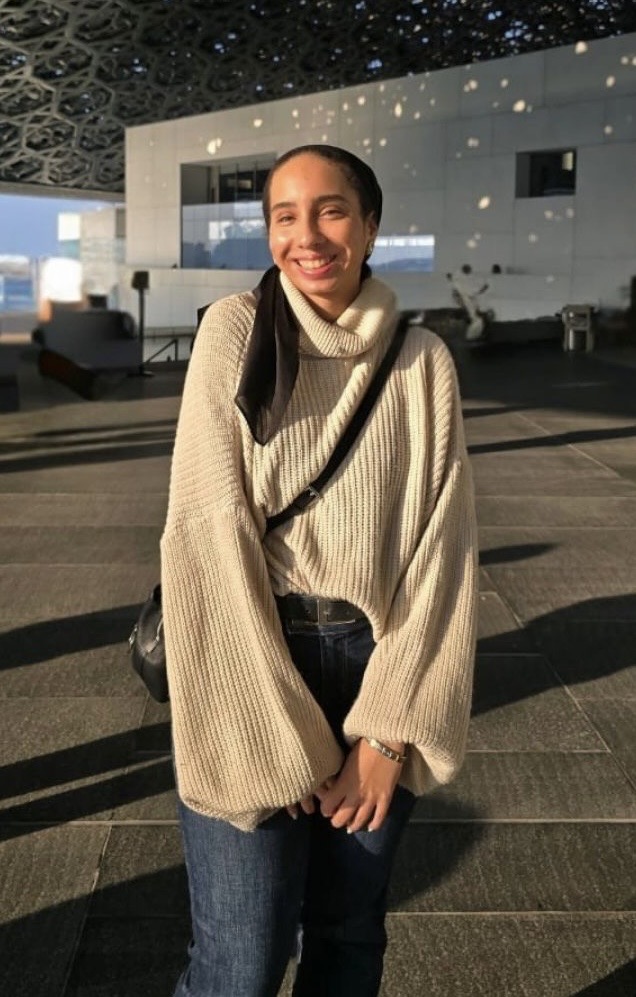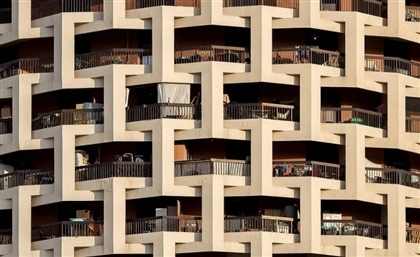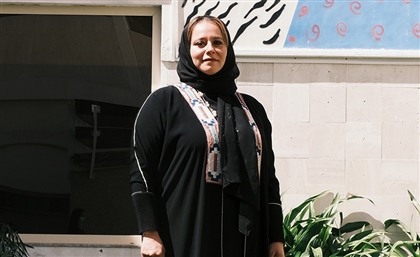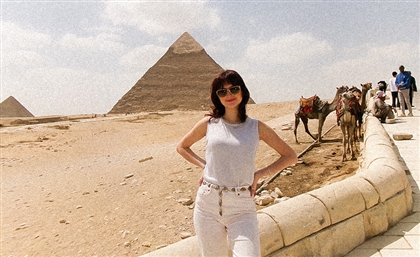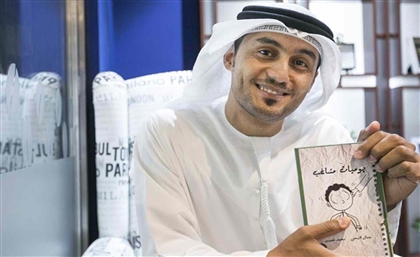The Land Remembers: Lebanon’s Pavilion at the Venice Biennale
CAL’s Venice Biennale pavilion explores how architecture begins with land, memory, and regeneration.
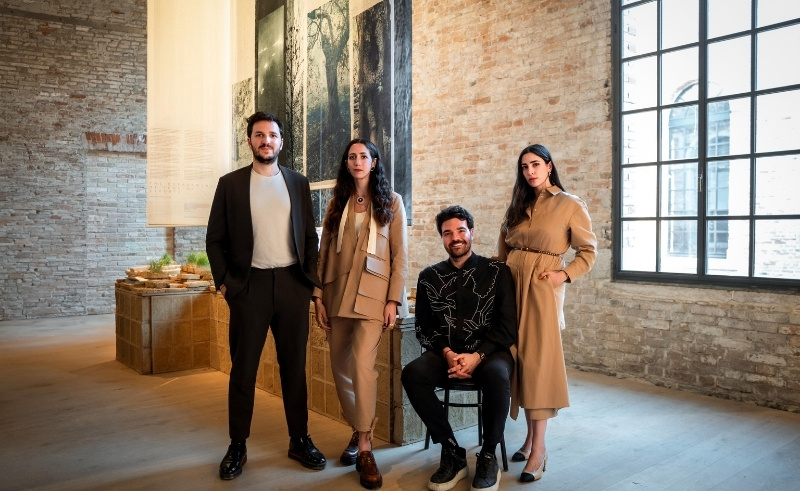
In Venice, Lebanon’s pavilion at the 19th International Architecture Exhibition of La Biennale di Venezia stood as both an archive and a manifesto. Curated by Collective for Architecture Lebanon (CAL), 'The Land Remembers' sought to confront the crisis of ecocide and to reframe architecture’s role in the face of environmental devastation. For the collective, the pavilion was not only an exhibition but “a call to action" and "a space for activism,” one that asked how architecture can participate in healing a wounded land.
CAL was founded in 2019 by four co-creators: Shereen Doummar, Edouard Souhaid, Elias Tamer and Lynn Chamoun. From the outset, the non-profit collective positioned itself as a cross-disciplinary platform, creating a space where architecture meets politics, culture and ecology. Their activities extend from exhibitions and publications to large-scale forums, always seeking to expand the conversation on the built environment.
When the invitation to Venice became a possibility, it was less a simple curatorial commission than an act of determination. “At some point no one was there to represent Lebanon in the Biennale,” recalls Elias Tamer. “We thought this was very unfortunate because in Lebanon we pride ourselves on being the cultural hub of the Middle East. It would be unthinkable not to have our culture represented.”
Securing the pavilion, however, was only the beginning. Unlike many national pavilions supported by substantial state budgets, Lebanon’s team had limited resources. CAL assumed multiple roles – curators, initiators and fundraisers – to make the project possible. “We worked with a fraction of the resources available to other pavilions, and much of it fell on us to carry out ourselves,” Tamer explains. “We even built it by hand, seeking support from collaborators in the region, since we didn’t have a dedicated team from Lebanon on site like other pavilions did.”
For Edouard Souhaid, the act of simply being present carried its own urgency. “We wanted to show that, no matter the circumstances, Lebanon deserves to be represented on global cultural stages,” he tells SceneHome. “The story here is how we got to the Biennale. We were not just the curators, we were also the initiators.”-caef9812-769c-4c82-988d-fd8deb5e49bd.jpg) The pavilion’s curatorial statement began with a provocation: “Before architecture, there is land.” For CAL, the land is not an abstraction of square metres or territory, but a living archive marked by memory, destruction, and survival. Souhaid reflects, “There’s a connection to the land in our region, it’s not only about building – there’s a deep cultural resonance to the land itself.”
The pavilion’s curatorial statement began with a provocation: “Before architecture, there is land.” For CAL, the land is not an abstraction of square metres or territory, but a living archive marked by memory, destruction, and survival. Souhaid reflects, “There’s a connection to the land in our region, it’s not only about building – there’s a deep cultural resonance to the land itself.”-8b426da8-5634-47a4-aee1-8b6befc89809.jpg)
That connection was at the heart of The Land Remembers. Set against the backdrop of ongoing war, the pavilion refused to detach architecture from the political and environmental crises that shape it. “We weren’t only documenting the ecocide in South Lebanon,” Tamer notes. “We were looking at the war through an environmental lens rather than simply in terms of urban destruction. Our land is being destroyed every day. How do we speak about architecture when our soil and water are poisoned?”-7ffbe894-e6b4-430b-8d28-99aeae984307.jpg) To answer this, CAL invented an institution: the Ministry of Land Intelligens. Through it, the pavilion became a kind of spatial ministry, organised into four departments that addressed documentation, counter-mapping, biodiversity, and ecological healing. Maps, photographs, testimonies, and publications filled the space, transforming it into what Souhaid describes as “a team that represents Lebanon not just through architecture, but through disciplines that can work together to create the pavilion.”
To answer this, CAL invented an institution: the Ministry of Land Intelligens. Through it, the pavilion became a kind of spatial ministry, organised into four departments that addressed documentation, counter-mapping, biodiversity, and ecological healing. Maps, photographs, testimonies, and publications filled the space, transforming it into what Souhaid describes as “a team that represents Lebanon not just through architecture, but through disciplines that can work together to create the pavilion.”-f94f831a-a68a-408f-b587-0a0bd60894c1.jpg) The design itself embodied this principle. The pavilion was constructed from compacted soil bricks embedded with wheat seeds. Over the six months of the Biennale, the bricks sprouted, symbolising regeneration while recalling Lebanon’s legacy as the birthplace of wheat. Divided into four sections, each corresponding to a department of the ministry, the pavilion invited visitors to move through an evolving landscape of memory and renewal.
The design itself embodied this principle. The pavilion was constructed from compacted soil bricks embedded with wheat seeds. Over the six months of the Biennale, the bricks sprouted, symbolising regeneration while recalling Lebanon’s legacy as the birthplace of wheat. Divided into four sections, each corresponding to a department of the ministry, the pavilion invited visitors to move through an evolving landscape of memory and renewal.-7f8778a5-1f30-4a4a-a6f8-536c2b0cfbd6.jpg) It was never meant to remain static. A petition to ban the use of white phosphorus circulated within the space, collapsing the distance between exhibition and activism. “The idea of the pavilion,” says Tamer, “was to give people the tools they need to become activists themselves – by understanding, by learning, and by acting.”
It was never meant to remain static. A petition to ban the use of white phosphorus circulated within the space, collapsing the distance between exhibition and activism. “The idea of the pavilion,” says Tamer, “was to give people the tools they need to become activists themselves – by understanding, by learning, and by acting.”-e9f4a2d9-d6cf-4d6b-b1ce-2d32fbab7a7a.jpg) For CAL, the project extended far beyond Venice. The publication accompanying the pavilion was conceived as “a vessel of living documents” – a collection of essays, testimonies, maps, and illustrations designed not only to document destruction but also to chart paths of restoration. As Souhaid explains, “Architecture often speaks only to itself. We wanted to make sure our pavilion could resonate with a broader group of people.”
For CAL, the project extended far beyond Venice. The publication accompanying the pavilion was conceived as “a vessel of living documents” – a collection of essays, testimonies, maps, and illustrations designed not only to document destruction but also to chart paths of restoration. As Souhaid explains, “Architecture often speaks only to itself. We wanted to make sure our pavilion could resonate with a broader group of people.”-72f02aba-ba3a-4146-865c-9c4fa3429b0b.jpg) In that sense, The Land Remembers was less about representing Lebanon to the world than about ensuring Lebanon remained present in a moment when war threatened to silence it. It was also about asserting the responsibility of architects to act as custodians of the land itself. As CAL’s statement insists, “Before seeking to rebuild, architects must adopt an activist role in the face of environmental devastation.”
In that sense, The Land Remembers was less about representing Lebanon to the world than about ensuring Lebanon remained present in a moment when war threatened to silence it. It was also about asserting the responsibility of architects to act as custodians of the land itself. As CAL’s statement insists, “Before seeking to rebuild, architects must adopt an activist role in the face of environmental devastation.”
Trending This Week
-
Dec 27, 2025







